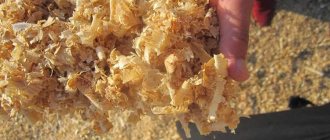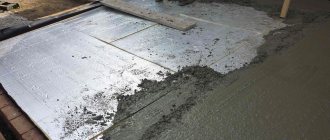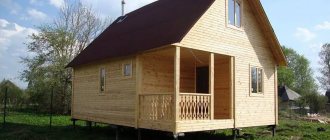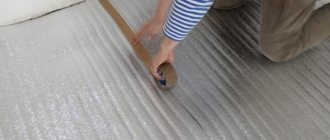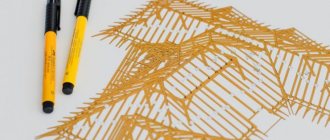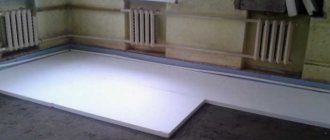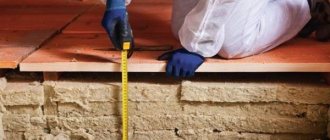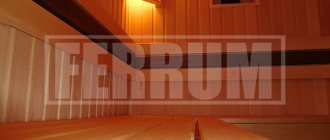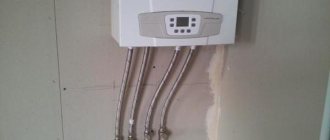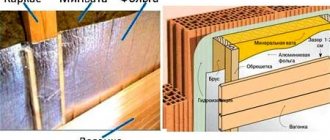Wooden floors are more often than others, especially recently, used in the construction of private country houses and cottages. Floors are constructed both on wooden beams and on reinforced concrete floors.
The thermal conductivity of wood is much lower than that of stone or concrete, making it warmer to the touch. Nevertheless, very often it is necessary to insulate wooden floors, especially on the first floors of buildings.
Why insulate a wooden floor?
Wood is a fairly warm material compared to concrete, but when building a frame private house or a house made of timber with your own hands, it is not always possible to achieve a rational balance of the thickness of the structure in terms of strength and thermal conductivity. To reduce the consumption of materials on walls and foundations, thermal insulation is necessary. It is possible to carry out insulation work both in an old building that has been commissioned for a long time, and in new construction.
Insulating the floor in a wooden house can prevent the following problems:
- the appearance of excessive dampness in the room;
- reducing the temperature in the task;
- condensation, which causes mold to appear;
- the appearance of fungus and other microorganisms dangerous to humans;
- increased heating costs;
- destruction of wooden structures from the inside.
By doing the work yourself you can significantly reduce costs. Now there are many materials, the use of which does not require special skills and high qualifications.
Diagram of all heat losses of a wooden house.
Nuances
Concrete, which has already been mentioned more than once, is a necessary basis for a wooden floor. The fact is that “floors” most often mean the final coating with which the interaction directly occurs. So, a parquet floor is also wooden, but parquet boards can lie on concrete, that is, a base.
If we consider the floor in global terms, it is a rather complex system consisting of many sections. Wood in this case is the last “layer”, a finish that cannot be insulated by itself - all activities are carried out on its base, from below.
All insulation work on wooden floors is carried out precisely on the base area, the “subfloor”. The finished insulation systems are covered on top with some material, one of which is wood. When they talk about the thermal protection of wooden floors, they mean different floorings that are not visible behind the final floor covering.
Creating an insulating layer on top of the rough layer, as a rule, involves laying polyethylene - it provides excellent protection against changes in humidity and is low cost.
Which floors require insulation?
The following structures need protection:
- cold basement floor pie;
- attic floor;
- interfloor slab design.
In the case of an interfloor option, the material is used as sound insulation. In this case, you need to provide a layer 3-5 cm thick.
Insulating the floor of the first floor in a wooden house allows you to provide comfortable living conditions. Most heat loss occurs through the ceiling of the upper floor, so it is necessary that the insulation is selected and installed correctly.
Materials for work
To properly insulate the floor in a wooden house, you need to choose high-quality insulation that has all the necessary properties. Insulation can be carried out both from the inside of the room and from the cold air side.
To insulate an attic floor from the inside or a basement floor with your own hands, it is better to use lightweight materials that can be easily attached to the floor pie from below. In this case, it would be correct to use:
- mineral wool in rolls;
- Styrofoam;
- polyurethane foam.
These materials will ensure maximum convenience when insulating the ceiling with your own hands.
When insulating a frame house, a house made of timber or logs, you can carry out work from inside the room for the floor of the first floor and outside for the last floor. In this case, it is better to insulate the floor along joists or beams, since this will prevent the load from being transferred to the fragile material. For this type of work you can use the following materials:
More information about insulation with sawdust and expanded clay can be found in the articles “Insulation of floors with expanded clay” and “Insulation of floors with sawdust.” These materials have such advantages as natural origin and low cost, so if you need to reduce construction costs or insulation in an old building and ensure complete environmental friendliness, it is better to use them. However, they are less technologically advanced compared to other materials.
Recently, the method of insulating floors with foam (polyurethane foam) is also gaining popularity. This method is good for its low labor intensity and high efficiency.
Floor insulation with polystyrene foam also deserves attention due to the relatively low cost of the material and ease of installation. The method of floor insulation with Penoplex (extruded polystyrene foam) is less popular in wooden floors due to the high cost of the material - it is more suitable for insulation under screed.
Calculation of insulation thickness
To calculate the thickness of the floor insulation, you need to refer to the calculator on the website. The total heat transfer resistance should not be less than the normalized value for the region. The total value is the sum of the thermal resistance indicators of each layer of the structure. Usually they consider the heat transfer resistance of insulation, subfloor boards, if there are no gaps between them, and the resistance of the flooring applied to the joists: plywood, OSB. Membranes are not taken into account.
The heat transfer resistance for each layer is determined by the formula R = h/λ, where h is the thickness and λ is the thermal conductivity coefficient. This is a tabular value.
The calculator asks you to select the insulation you will use. Determine your region. The calculator shows the normalized value for floors in your region. It will be indicated on the website with blue numbers. Then the program specifies the material and thickness of the subfloor. If there are gaps between the boards, then they are not taken into account. They put 0.
The calculator indicates the material and thickness of the continuous sheathing of the finishing coating. As a result of the calculations, you will find out the thickness of the insulation in millimeters.
Floor insulation technology
It is important to lay the insulation correctly, observing the correct order of all layers. The floor pie when insulating the attic floor, the floor of the second floor or the first has not always noticeable, but significant differences.
Insulation of the floor of the first floor from below
Scheme of floor insulation over a cold underground
In this case, when carrying out work with your own hands, the materials should be correctly laid in the following order:
- waterproofing;
- insulation;
- vapor barrier;
- ceiling design.
When building a house from timber or frame, the material is secured along the beams. After which the filing is performed. As a protection against moisture and steam, you can use ordinary polyethylene film. As a second option for waterproofing, moisture-proof membranes are used. If all layers are laid correctly, the structure will be reliably and competently protected from the cold from the point of view of heating engineering.
This method is very labor-intensive and is used only if it is not possible to insulate from the inside.
Also, for insulation from below, the method of insulating the ceiling with foam is perfect.
Insulation of the ground floor floor from the inside
Carrying out work under the ceiling is quite inconvenient, therefore, when constructing a frame house or a building made of timber, insulation of the first floor ceiling is often carried out using beams from above. In this case, in addition to the previously mentioned materials, you can use bulk materials such as sawdust and expanded clay. When carrying out insulation with your own hands, correctly lay all layers in the following sequence:
- floor design;
- waterproofing;
- insulation;
- vapor barrier;
- clean floor.
The vapor barrier must be placed from the inside of the room, so it will work correctly, preventing damage to the floor along the timber beams.
Insulation of interfloor ceilings
In the first case, the insulation dampens airborne noise: human speech, music, etc. In the second case, the structure is also perfectly insulated from impact noise - steps, jumps, etc.
Proper sound insulation of interfloor ceilings is the key to a comfortable stay for all family members.
Insulation of the ceiling of the upper floor from the inside
Installing insulation from the inside does not provide maximum protection for structures, but it can be used as a second option for laying insulation. In this case, the insulation is mounted on the beams from below the floor. It would be correct to arrange the layers in this order:
- vapor barrier;
- insulation;
- waterproofing;
- beam-based floor structure.
Insulating the attic floor
When constructing and repairing a frame house, a house made of timber or logs, it is better to insulate the attic from above. This method has the following advantages:
- ease of installation;
- the possibility of using inexpensive bulk materials;
- competent thermal protection;
- insulation of not only the room, but also the ceiling along the beams of a house made of timber or frame;
- prevention of condensation in the thickness of the ceiling.
To ensure proper protection, the layers are laid in the following order from bottom to top:
- floor design;
- vapor barrier;
- thermal insulation material;
- waterproofing.
For waterproofing, a plastic film will be sufficient, but as a second, more serious option, you can use roofing felt. When building a house from timber or during frame construction, you can also read the article “Insulating the attic floor using wooden beams.”
